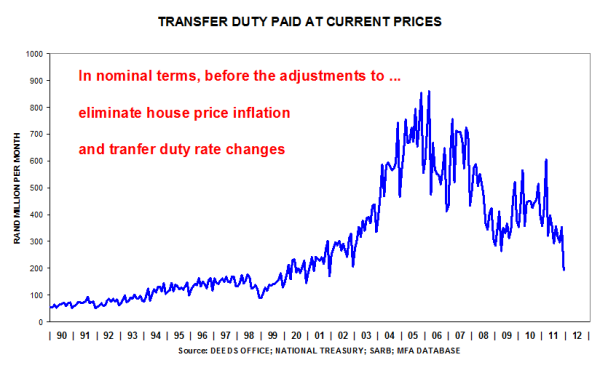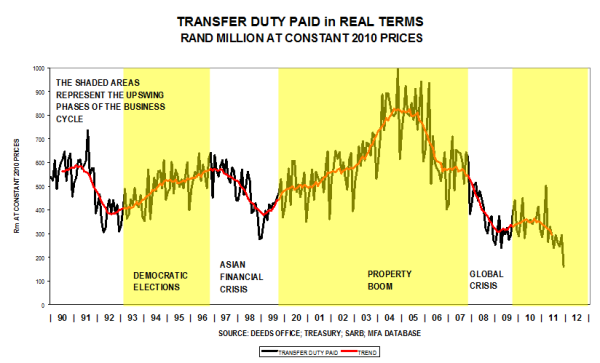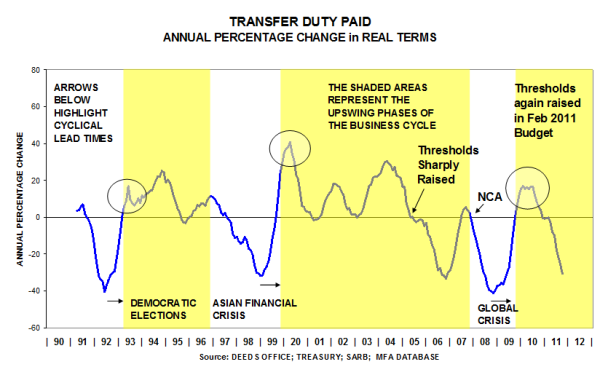The revenue raised by the Fiscus from Transfer Duty Paid is a reflection of the well-being of the residential property market. This is the case because transfer duty is gathered by conveyancers (on behalf of the Receiver of Revenue) when existing houses are bought and sold (new houses are subject to VAT).
To assist middle-class people to purchase a home, the Minister of Finance raised the threshold at which point transfer duty is payable, from R500 000 to R600 000. This happened in February 2011 at the time of the national budget.
The latest figure for Dec 2011 was much lower than in Nov 2011, and a lot lower than in Dec 2010 if one eliminates the seasonal effect. Overall, the proceeds from transfer duty were R5 302m in 2010 and R4 272m in 2011.
This represents a decline of -19.4%, a severe drop in revenue from this source.
Our 3 accompanying slides show the following:
- That in nominal terms the level has dropped below that prevailing in 1998 at the time of the Asian financial crisis
- That in real terms (stripping inflation out and adjusting for transfer duty rate changes), the level is at its lowest point since the time series started in 1990
- That the annual percentage change is currently -31% lower than a year ago.
Based upon this analysis, it seems that the volume of sales of existing residential units shrunk during the latter part of 2011. This had a negative knock-on effect on transfer duty paid by new homeowners. One can therefore expect no further concessions from the Minister of Finance in the upcoming budget on 22 February 2012.





